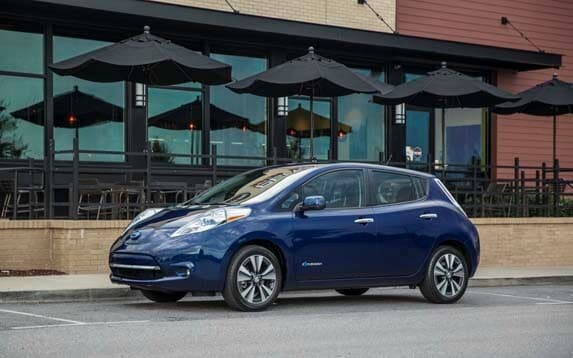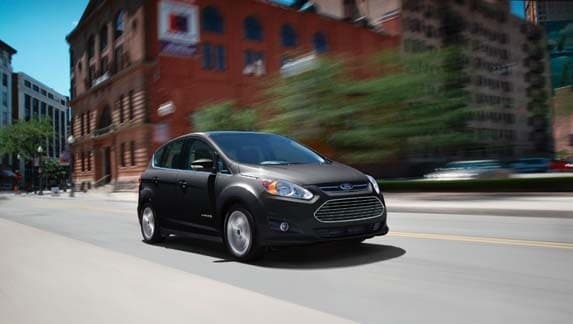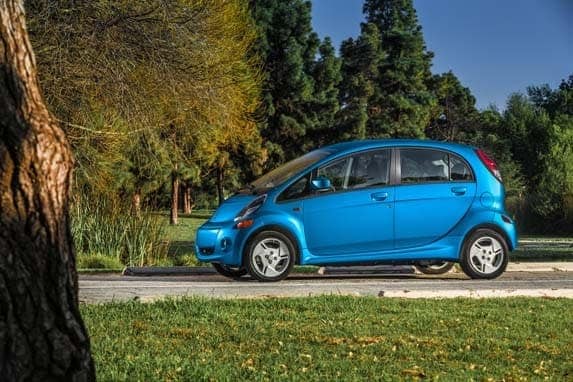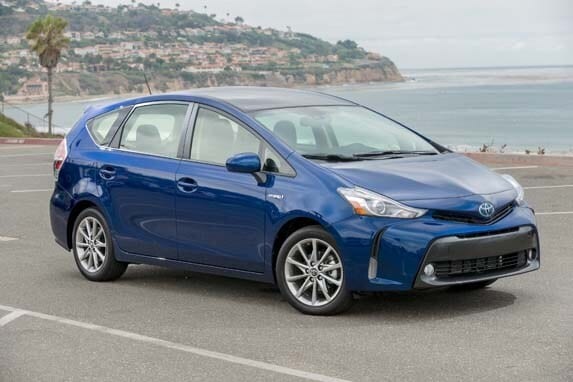To date, the U.S. automotive market has enjoyed a banner sales year. The market has grown five percent overall through September, to the tune of 13,052,388 vehicles sold. But not all segments have enjoyed growth-hybrid and electric vehicles in particular.
Overall sales fell 16.3 percent year to date on hybrid, electric and alternative energy vehicles. While there are a number of reasons for the downturn, cheaper gas prices and a booming demand for crossover vehicles are the biggest factors.
Also: See the New and Redesigned Cars of 2016
Buyers find more value in crossovers
According to AAA, the average price of gasoline nationwide has dropped $0.90 in the past 12 months. Combined with the relative higher upfront costs of purchasing an electric or hybrid vehicle, it may now take longer for buyers to recoup that expenditure in fuel savings. This comes as average transaction prices on new cars continue to creep upward with September prices rising two percent year to date across the industry to $33,730.
"I think as long as fuel prices are relatively low and credit is relatively easy to get, it’s going to be hard for electric vehicles to compete," says Karl Brauer, Senior Director of Insights at Kelley Blue Book. "Buyers are just getting more flexibility when they buy SUVs, especially small SUVs, because it’s at a sweet spot for price, fuel efficiency, functionality, and style. It’s the hottest segment right now."
Crossover SUV sales accelerated once again in September with the greatest leap occurring in the compact and midsize segments, which increased 16.6 and 11.7 percent on the year, respectively. By comparison, hybrids and EVs were down for the calendar year with Ford declining 26.4 percent and Toyota down 17.1 percent (Prius family declining 14.2 percent) and General Motors dropping 30.2 percent. Despite the slump, the major automakers remain steadfast on the future of hybrid and electric vehicles.
"I like to tell people that when we launched the original Prius in 2000, gas was still cheap," says Jana Hartline, Environmental Communications Manager at Toyota. "The Prius family will remain part of our lineup for quite some time, regardless of the price of gasoline."
Regulation integral to Hybrid/EV presence
While overall EV and hybrid sales are down, government regulation will ensure they certainly aren’t out. Today’s automakers must comply with increasingly stringent fuel economy standards which aim to reduce fuel consumption and lower tailpipe emissions. These Corporate Average Fuel Economy standards mandate fleet-wide efficiency standards of 41 mpg by 2021 and by 2025, they climb to 49.7 mpg.
Alternative fuel vehicles-such as battery electrics, fuel cell vehicles and hybrids-represent key technologies for raising these fleet-wide figures given their low or lack-of reliance on fossil fuels. As a result they earn credits for automakers, which are applied to reach compliance.
California’s Zero Emission Vehicle (ZEV) regulations take this a step beyond by mandating automakers sell zero emission vehicles in the state (and now nine other participating states) with the goal of achieving a 15.4 percent share of new car sales by 2025.
"Between the ZEV mandate and CAFE, the requirements start to go up at a faster clip once you get into the 2018 and 2019 calendar year timeframe, and we’ve got to be prepared for that regardless of the price of gas," says Garett Carr, Electric Vehicle Marketing Manager at Ford. "We’re committed, we’re in it, and we’re going to continue to be in it."
EVs tout tech and connectivity
Automakers are also finding new ways to bring greater value to electric vehicles. For instance, Tesla has pioneered over-the-air software updates and built-in technology to allow for increased autonomous capabilities in the future. Inductive charging systems, at least in the aftermarket, are now available for those not wanting to physically "plug in." And apps like BMW’s i Remote and Ford’s MyFord Mobile app allow users to monitor battery charge information and find the nearest charge points, averting some of the worries of electric car ownership.
"With electrification comes a desire to know where you can charge at all times," says Carr. "The driving force behind the app was to ensure our customers have the latest updated information on the state of charge of their vehicle."
As electric vehicle technology improves, overall range increases, and fast-charging points multiply, the EV will mount a more formidable challenge to its petroleum-powered counterparts. And the recent scandal involving Volkswagen diesel engines may accelerate that process.
Also: Kelley Blue Book Best Buy Awards of 2015
Diesel dead end?
Historically, diesel-powered cars have represented a higher-mpg alternative to gas-powered vehicles with mileage rivaling some hybrids. The recent Volkswagen diesel scandal, in which defeat devices were used to fool emissions testing, highlights the increasingly difficult process of reaching those higher levels of efficiency while maintaining low costs and lower emissions.
If diesel vehicle prices begin to rise and public perception sways, EV and hybrid vehicles stand to net the greatest sales benefit moving forward, and recent Kelley Blue Book data suggests this distrust in diesel is growing with 72 percent of respondents in a recent poll believing the issue could spread beyond Volkswagen. Also, 30 percent say they would be less likely to consider a diesel vehicle altogether.
"Overall you’re going to see demand for diesels drop," says Brauer. "At the end of the day, there’s a certain population of car buyers who will buy a car for environmental reasons, and that population will now be steered away from diesels based on what just happened. That then leads them straight to hybrids and electrics."
POPULAR AT KBB.COM


















